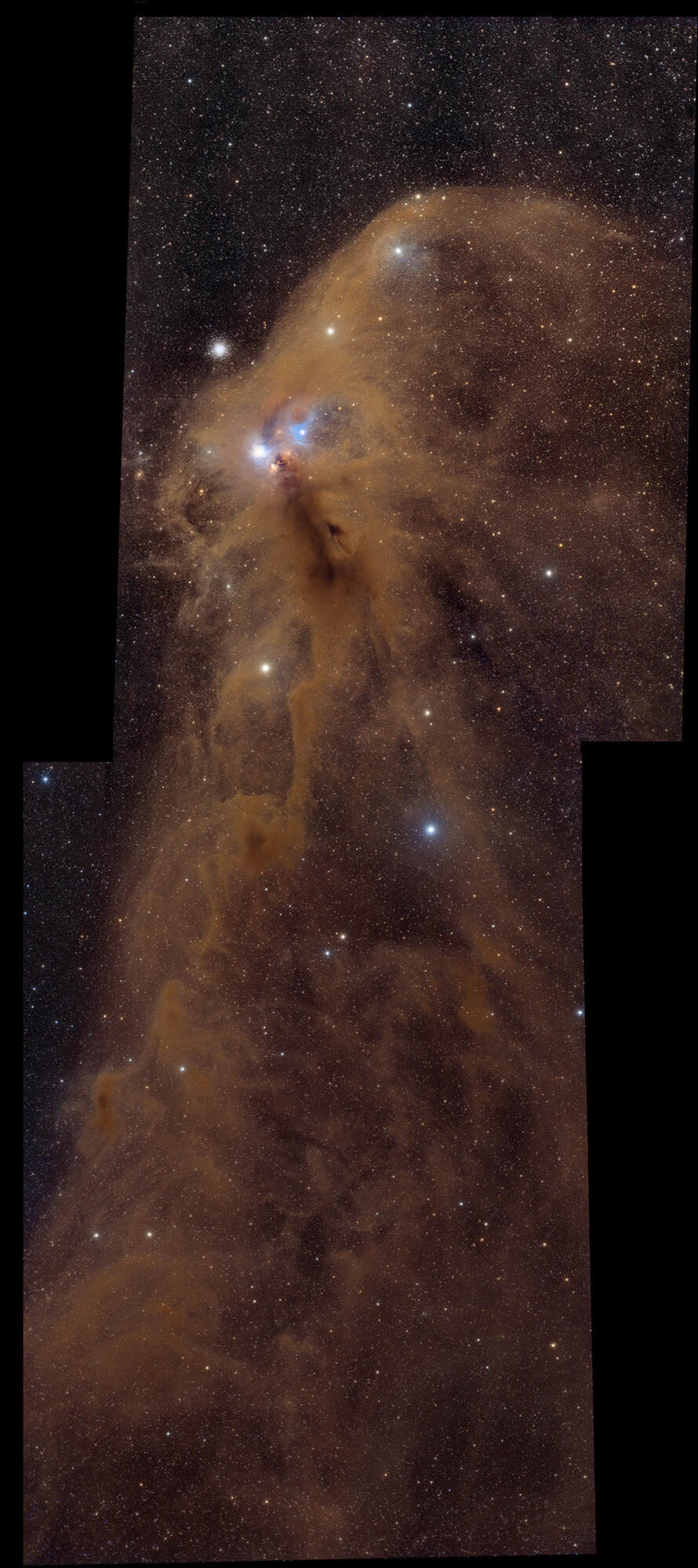Cosmos IC 4812
Corona Australis is a constellation in the Southern Celestial Hemisphere. Its Latin name means “southern crown”, and it is the southern counterpart of Corona Borealis, the northern crown. It is one of the 48 constellations listed by the 2nd-century astronomer Ptolemy, and it remains one of the 88 modern constellations. The Ancient Greeks saw Corona Australis as a wreath rather than a crown and associated it with Sagittarius or Centaurus. Other cultures have likened the pattern to a turtle, ostrich nest, a tent, or even a hut belonging to a rock hyrax.
Although fainter than its northern counterpart, the oval- or horseshoe-shaped pattern of its brighter stars renders it distinctive. Alpha and Beta Coronae Australis are the two brightest stars with an apparent magnitude of around 4.1. Epsilon Coronae Australis is the brightest example of a W Ursae Majoris variable in the southern sky. Lying alongside the Milky Way, Corona Australis contains one of the closest star-forming regions to the Solar System—a dusty dark nebula known as the Corona Australis Molecular Cloud, lying about 430 light years away. Within it are stars at the earliest stages of their lifespan. The variable stars R and TY Coronae Australis light up parts of the nebula, which varies in brightness accordingly.
